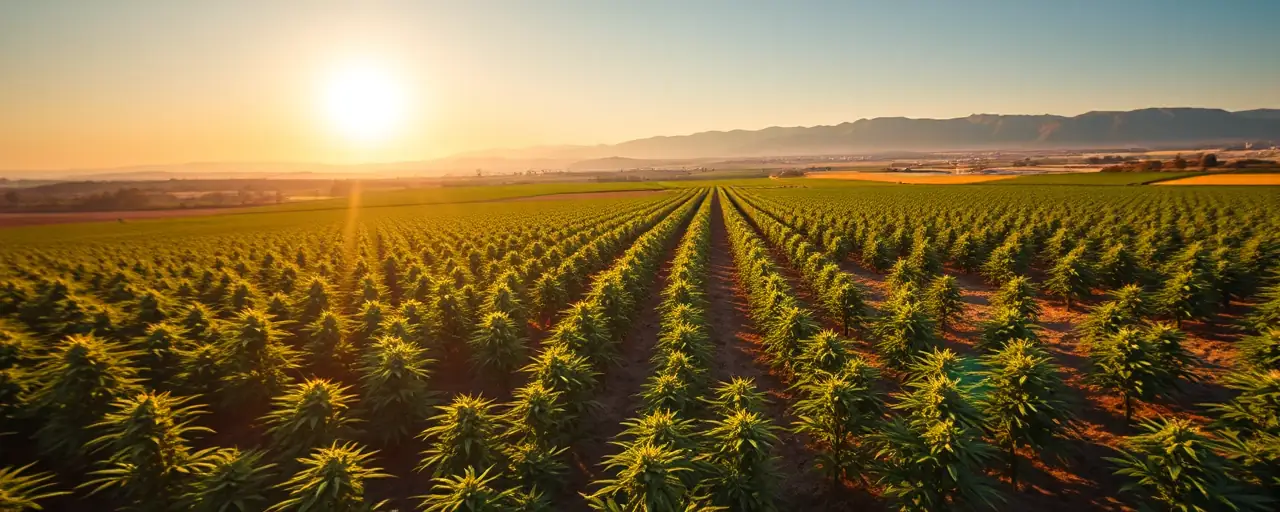A Sudden Sweep Against Illegal Cannabis
California authorities hit the ground running in 2025, confiscating over $316 million worth of illegal cannabis plants in a series of coordinated raids. The operations, announced by Governor Gavin Newsom on April 10, also netted $474,000 in cash, marking a sharp escalation in the state’s fight against unlicensed growers and sellers. It’s a gritty, real-world effort that’s left 212,681 plants uprooted, 35 firearms seized, and 29 people arrested, all since January.
This isn’t just about numbers; it’s about what’s at stake. The state’s legal cannabis market, the largest of its kind globally, promises tested products, fair labor, and a chunk of economic growth. Yet, it’s tangled in a tug-of-war with a sprawling illicit trade that’s proving tough to stamp out. For everyday Californians, the question looms: how does this crackdown affect their safety, their wallets, and the weed they buy?
The Legal Market’s Fight for Ground
California’s regulated cannabis industry is no small player. It raked in $316.53 million in sales by March 2025, with production jumping 11.8% in 2024 to 1.4 million pounds. Still, that’s only 40% of what people are smoking, vaping, or eating statewide. The other 60%? It’s coming from unlicensed operators who dodge taxes and testing, often selling cheaper and riskier goods. High taxes, sometimes hitting 45% in certain areas, don’t help, pushing buyers toward the black market.
The state’s not sitting idle. Alongside the raids, officials are tweaking taxes and regulations to give legal businesses a fighting chance. A recent Department of Cannabis Control report shows prices holding steady and industry value ticking up, offering a glimmer of hope. But with legal sales dipping from $5.39 billion in 2022 to $5.18 billion in 2024, it’s clear the illicit trade’s shadow still looms large.
Hemp Hazards Spark Emergency Rules
It’s not just cannabis plants in the crosshairs. Last September, Governor Newsom rolled out emergency hemp regulations after a spike in health issues tied to intoxicating hemp products, like edibles and drinks. These rules ban any detectable THC in consumable hemp items, set a 21-and-up age limit, and cap packages at five servings. The move came after testing showed over 50% of hemp products exceeded THC limits, with many laced with pesticides or mislabeled entirely.
Enforcement kicked into high gear, with agents from the Alcoholic Beverage Control sweeping 9,251 locations and seizing 7,007 hemp products from 141 violators. Industry groups pushed back, filing suits to block the rules, but a Los Angeles County Superior Court ruling in October kept them in place. For consumers, it’s a safety net; for hemp producers, it’s a tight squeeze on their market.
Task Force Takes Aim at the Black Market
Behind the seizures stands the Unified Cannabis Enforcement Task Force, launched by Newsom in 2022 to sync up state, local, and federal efforts. In 2024, it eradicated over 236,000 illegal plants and grabbed $254 million in unlicensed goods. This year’s $316 million haul builds on that, targeting grow sites, shady dispensaries, and distribution rings. The task force isn’t just after plants; it’s confiscating guns and tackling environmental damage tied to illegal operations.
The results are tangible, yet the challenge persists. Unlicensed operators churn out anywhere from 7 million to 16.3 million pounds of cannabis yearly, dwarfing the legal sector’s output. With 75% of cannabis shops operating off the books, the task force’s work is a drop in a very deep bucket. Supporters say it’s vital for public health and the legal market’s survival; skeptics argue it’s a costly game of whack-a-mole.
Weighing the Stakes
Since 2019, California has destroyed over 800 tons of illegal cannabis worth $3.1 billion across 1,500 operations. That’s a staggering haul, reflecting years of effort to protect consumers and prop up a regulated industry that funds schools, health programs, and environmental projects. The flip side? The illicit market’s grip hasn’t loosened much, fueled by high costs and red tape that legal businesses can’t shake. For every plant seized, plenty more stay hidden.
What’s next feels like anyone’s guess. The state’s doubling down on enforcement while nudging the legal market toward stability. Consumers get safer options, ideally, but only if the balance tips against the black market. For now, it’s a messy, ongoing battle, one that’s less about headlines and more about what lands on shelves, in lungs, and in the state’s coffers.
